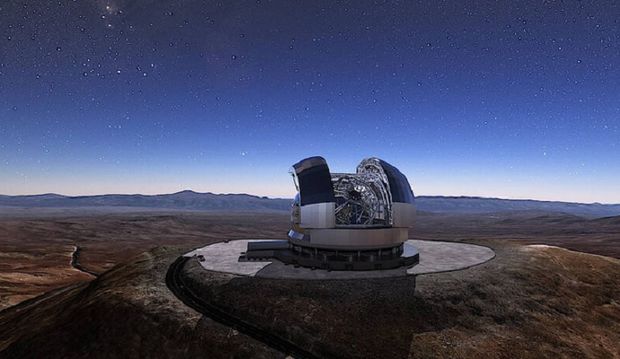Important milestone: The METIS device for the Extremely Large Telescope (ELT) at the European Southern Observatory (ESO) aims to find Earth-like planets.

METIS, a camera combined with a spectrometer, can make observations in the infrared wavelength range and benefit from the advantages of the ELT’s primary 39 meter (in diameter) mirror. One area of research will be searching for Earth-like exoplanets. In addition to the JKU, other involved Austrian institutions include the University of Vienna, the University of Innsbruck and RICAM of the Austrian Academy of Sciences.
Scheduled to go into operation in the middle of this decade, the ELT has an innovative adaptive optics system and will be the world's largest reflecting telescope with a 39 meter mirror (in diameter). The Mid-Infrared ELT Imager and Spectrograph (METIS) device is a part of the ELT, opening an important wavelength window to study the life cycle of stars as well as the physical processes in galaxy nuclei.
A special focus will be observing exoplanets. METIS gives scientists an opportunity to study the atmospheres of exoplanets in more detail, including temperatures and seasonal weather conditions. METIS also has the potential to directly detect terrestrial exoplanets.
Next Phase of Development Begins
After an in-depth, positive evaluation of the concepts for the optomechanics, electronics and software, the METIS design can now be finalized. The actual construction of the device will start in 2022. METIS will be constructed by an international consortium of university and research institutes in Germany, Austria, the Netherlands, France, Belgium, Switzerland, Scotland, Portugal, Taiwan, and the USA. The consortium is managed by the University of Leiden (Netherlands).
Astronomical Observation Simulations Assist in the Development
Austria has been a member of ESO, the world's largest research infrastructure for astrophysics, since 2008. In order to ensure sustainable use of this infrastructure, Austrian scientists are actively involved in developing new research devices for ESO as part of a consortium in the fields of astrophysics and applied mathematics and under the management of the University of Vienna.
The Institute of Astrophysics is working with ETH Zurich to develop a software package to simulate astronomical observations and evaluate the METIS’ performance as early as during the design phase. A software pipeline to calibrate and analyze METIS observations is currently in development. The software will have to process a data volume of several terabytes per night.
Processing Cosmic Images
Together with RICAM (Johann Radon Institute for Computational and Applied Mathematics), the Institute of Industrial Mathematics at the JKU Linz, headed by Prof. Ronny Ramlau is developing a software package to simulate, quantify, and reconstruct image distortions caused by optical and atmospheric disturbances. The partnership is funded thus far by financial contributions from universities and institutes; a significant portion provided by the Austrian Federal Ministry of Education, Science and Research. At the moment, funds are being acquired for the next few years until the device is finished.








